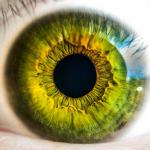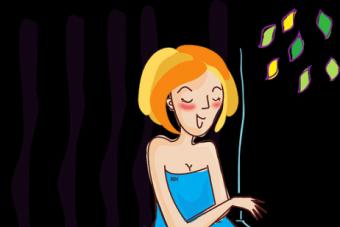Reproduction of the image of the subject
Representation is a reproduced image of an object based on our past experience. Therefore, the concept of "representation" is closely related to the concept of "perception":Perception gives us a direct image of the object in real time and in the presence of the object,
The representation also gives us an image of the subject, but not in real time and - as a rule - in the absence of the subject.
In the first case, the source of the image of an object lies in the object itself and the operation of the sensors. In the second case, the source of the image lies in our memory and the features of the current activity. However, with some stretch, we can say that the representation is a perception delayed in time.
visibility
Like perceptions, representations, even general ones, are visual. Compared to perception, representations are usually less bright, although the degree of brightness of the representation varies greatly. The presented object is clear:It appears in its essential properties,
It has the quality of a model, that is, it can be used to model certain relationships, situations.
Fragmentation
Different representations have different - sometimes greater, sometimes less - fragmentation. In a careful analysis or attempt to establish all the sides or features of the object, the image of which is given in the presentation, it usually turns out that some sides, features or parts are not represented at all.On the one hand, this may seem like a flaw in the presentation. For example, we can quite clearly imagine a sign on the door of a store with the indicated opening hours, we can imagine its color, design style, even the font of numbers, but the numbers themselves - opening hours - did not fall into this image. But it may be that this information is very important for us, and the design of the plate will not matter at all, and the content will be the other way around.
On the other hand, this is one of the functions of representation: to simplify the image of an object as much as possible, leaving only its most essential characteristics. Simplification can reach the level of abstraction, and then this image is included in the level of abstract-logical thinking.
Yes, the operation of this mechanism can sometimes fail (as in the example with a tablet), but you need to understand that the structure of the presentation is highly dependent on the characteristics of perception. If we were very impressed by the design of the plate, and at the same time we did not pay much attention to the content of it, then it is the design of the plate that can dominate the presentation.
Generalization
An amazing and very important feature of the representation is the generalization of images.Suppose we read a book five years ago, such as Anna Karenina. As time passes, we can no longer remember what all the pages of the book looked like, we don’t remember detailed content described scenes, even the sequence of scenes may be forgotten. However, the image of the entire work as a whole remained. Images of the most memorable scenes have been preserved. If the book was decorated with illustrations, then we can recall some of them. Some minor details may come to mind (for example, that a funny typo was encountered in some place).
Therefore, we can say that representations give us images that were not completely, together in our perception, but were compiled and generalized from a chain of images of perception. The complexity of this process (generalization) can also be understood in the fact that the image of the same "Anna Karenina" is more or less complete, but we could read the book itself for a long time (a week, a month, three months), interrupting this occupation with other things.
Item Modeling
Perception gives images (and very detailed) of the current situation. It is already in perception that individual objects are separated from the background, but in perception objects are still closely connected with the background, that is, with the situation. In the image given by perception, a chair stands next to a table, another stands behind one person, the person is wearing a blue dress, he is holding a box of pencils, and so on.In the image that gives an idea, there are usually models. If necessary, one model can be associated with another, if necessary, then only one model is considered: next to the chair there is no table and nothing at all, the person is also alone, he is wearing something feminine, but in the hands something stationery.
Item Properties Modeling
One can imagine " green color", you can imagine "bright green color", etc. You can imagine "something low", or you can imagine "something high". Interestingly, in the latter case, a person usually mentally throws his head up, and in such cases, one can even experimentally note a short-term tension of the muscles of the neck.Mobility
One of the obvious "shortcomings" of representations is their extreme instability, mobility, and dynamism. Without special training, it is very difficult to keep the same idea in your mind for at least one minute: it will change on its own, will cause associated images-representations.For example, the presentation of the novel "Anna Karenina" will very quickly flow into the presentation of some scene from this novel, the image of the scene may evoke an idea of one of the participants in the scene, this image will evoke an idea of - for example - a "typical man", this image will give rise to an idea of real man from life. Etc.
Such mobility is dictated by the very method of modeling, that is, representation in dynamics.
Modeling genus-species relations
You can imagine a specific person (for example, a male colleague). Can you imagine some social group and a typical member of this group (for example, all male colleagues). You can move further up the hierarchy: all men, all people, all animals. You can move down the hierarchy: animal - people - bad people- bad people-bosses - my boss.Simulation fantastic
The main "food" for representation is memory. However, there may be such complex manifestations of the work of our memory and representation as:memory of memory,
The memory of the show
concept of memory,
Representation about representation.
Such a complex reflection allows the psyche to work not only with ideas about real objects, but also generate fantastic images-representations. This process is called imagination. It is difficult to overestimate the importance of imagination for the evolution of mankind. Everything new that appeared in the everyday life of a reasonable person came from a fictional space: a stone ax, fabric, a wheel, a computer...
Visual basis of mental activity
Any thinking - visual or abstract-logical operates with representations. In the first case, the representations are more detailed, visual (associated with the features of three-dimensional space). In the second case, the representations are schematic and highly abstract.The famous composer Ludwig van Beethoven, as you know, lost his hearing (deaf) in adulthood, but did not stop creating. Representations became for him the only visual basis in his professional activity.
Representation- this is a mental process of reflecting objects or phenomena that are not currently perceived, but are recreated on the basis of our previous experience. The results of the presentation are secondary images, that is, the “first signals” extracted from memory. Representations reproduce past primary images. These are images of objects that do not currently act on the receptor surface of the analyzer. Representations embody one of the types of memory (figurative memory), which determines their most important significance in the structure of mental processes. Representations are a necessary link between the primary signal mental processes(images of sensations and perceptions) and second-signal mental and speech-thinking processes. Views allow you to see not only the “face”, but also the “back” of objects during their absence. Moreover, objects not only once directly perceived, but also belonging to a generalized class of objects synthesized in the representation.
We receive primary information about the world around us through sensation and perception. The excitation that arises in our sense organs does not disappear without a trace at the very moment when the action of stimuli on them ceases. After that, so-called successive images arise and persist for some time. However, the role of these images for the mental life of a person is relatively small. Much more important is the fact that even long after we have perceived an object, the image of this object can be again - accidentally or intentionally - caused by us.
The representation is based on the perception of objects that took place in the past. Several types of representations can be distinguished. First, these are representations of memory, i.e. representations that have arisen on the basis of our direct perception in the past of an object or phenomenon. Second, they are representations of the imagination. At first glance, this type of representation does not correspond to the definition of the concept of "representation", because in the imagination we display something that we have never seen, but this is only at first glance. Imagination representations are formed on the basis of the information received in past perceptions and its more or less creative processing. The richer the past experience, the brighter and fuller the corresponding representation can be.
The processes of perception, thinking, writing are always associated with representations, as well as memory, which stores information and through which representations are formed.
Representations are characterized by visibility. Representations are sensually visual images of reality, and this is their proximity to the images of perception. But perceptual images are a reflection of those objects of the material world that are perceived at the moment, while representations are reproduced and processed images of objects that were perceived in the past. Therefore, representations never have the degree of clarity that is inherent in the images of perception - they, as a rule, are much paler.
The next characteristic of views is fragmentation. Representations are full of gaps, certain parts and features are presented brightly, others very vaguely, and still others are absent altogether.
An equally significant characteristic of representations is their instability and inconstancy. Representations are not just visual images of reality, but always generalized images to a certain extent.
On the one hand, representations are visual, and in this they are similar to sensory and perceptual images. On the other hand, general representations contain a significant degree of generalization, and in this respect they are similar to concepts. Thus, representations are a transition from sensory and perceptual images to concepts.
Functions of representations: signal, regulating and adjusting.
signaling function- a reflection in each specific case not only of the image of an object that previously affected our senses, but also of diverse information about this object, which, under the influence of specific influences, is converted into a system of signals that control behavior.
Regulatory- selection of the necessary information about an object or phenomenon that previously affected our senses, taking into account the real conditions of the upcoming activity.
Tuning- in the orientation of human activity depending on the nature of environmental influences.
Types of representations: visual, auditory, motor (kinesthetic), tactile, olfactory, gustatory, temperature and organic.
Classification according to B. M. Teplov:
- according to their content (mathematical, geographical, technical, musical, etc.;
- according to the degree of generalization (private and general); according to the degree of manifestation of volitional efforts (voluntary and involuntary).
In everyday life, representation is often confused with imagination.
Representation- this is a mental process, which consists in recreating images of objects that do not currently act on our senses, but once acted before. In our imagination, we create an image that has never before affected our senses. It would be more correct to say: imagine yourself a winner Nobel Prize rather than imagine if you are not actually a Nobel laureate. Usually, representation is understood as the mental process of reflecting objects and phenomena of the surrounding reality in the form of generalized visual images. The product of representation is an image-representation, or a secondary sensory-visual image of objects or phenomena, stored and reproduced in the mind without a direct impact of the objects themselves on the senses.
From an image-representation as a product, one should distinguish representation as a process of deliberate and arbitrary creation of an image and mental manipulation (operating) with it when solving various kinds of problems.
Representations are in a complex relationship with other mental processes. Representation is related to sensation and perception by the figurative, visual form of their existence. But sensation and perception always precede representation, which cannot arise from scratch. Representation is precisely the result of a generalization of a number of essential, and sometimes non-essential features of an object.
Views often act as references. This circumstance brings them closer to the processes of cognition. Identification implies the presence of at least two objects - real, perceived, and reference. There is no such duality in representations.
Representation is secondary images. This is a restoration of an already seen image. We see a board and flowers, an idea of them will appear when we close our eyes. They heard a melody, and then remembered and imagined it, sounding in the same register and performed by the same musical instruments. So, a representation is a recreated image based on past experience. Representations are often called memory images, since in both cases a person's past experience is reproduced. Both are secondary images that arise without reliance on direct perception. But the view lacks the processes of remembering and saving. In the process of remembering, a person is always aware of the connection with the past, while in the representation, in addition to the past, the present and the future can be reflected. “The interpenetration of the visual and the generalized” in representations (B. G. Ananiev) makes them distinguishing feature and allows us to speak of representation as an independent mental process.
Properties and types of representation image
The view has the following properties:
1. Panoramic - the image can go beyond the boundaries of the field of view, be deployed, wider than the field.
2. The background on which we see the object can change in the representation.
3. There is no constancy of the image, there are violations, the image changes in absolute value, it can be larger or smaller than the real object.
4. There is a reduction, a generalization in the image. There may be temporary panorama: unification, compressibility of events with a violation of the sequence, you can hear a symphony in one minute. Shifts in the image of duration are possible: an event stretches in memory, but it was only a minute, years can be compressed in the representation, and one day can be stretched.
5. In the presentation, there may be a shift in color towards the primary colors, or discoloration in general. More often the images in the memory fade, their intensity decreases, less often - vice versa.
6. Fragmentation of representation images: what is remembered better is what made the greatest impression, but the image remains holistic.
7. Generalization - not a specific chair is presented, but in general; images are schematized.
View types
Depending on the characteristics of the subject of representation, there are two major kind: visual behind which stands a specific image, and abstract-logical behind which are abstract concepts (A. Richardson). Each of these views can have varying degrees of brightness, clarity and controllability.
The most common is the classification of visual representations by modality(B. G. Ananiev). It includes visual, olfactory, auditory, tactile, gustatory, kinesthetic, organic representations.
The latter are ideas about the functional states of the body, individual organs and parts of the body. Here, the analyzer type is used as the classification basis.
A separate type of presentation can be distinguished ideomotor representations- representations of movement. They are especially relevant for athletes, ballet dancers, dancers, musicians, when immediately before the action they must present it in great detail, based on past experience.
In accordance with two main forms of existence of matter distinguish such two kinds of representations, how ideas about space and time. Both of them are polymodal, but it is possible to single out the reflection of spatial and temporal characteristics separately at the level of visual and kinesthetic analyzers.
Based on the temporal assignment of representations, a classification of images into reproductive and anticipating(anticipating) (J. Piaget). In turn, each of them can be: a) static (representations of a fixed object); b) kinetic (ideas about different types movement); c) transforming (reflection known to man object transformations - from reflecting the final result to reflecting all stages of object transformation from the initial state to the final state).
Images-representations can perform the following basic operations: mental rotation, scale transformations, various kinds of object movements, combining the constituent parts of the represented object, changing the spatial orientation, increment, grouping, splitting.
special group constitute the operations of recoding information associated with changing the object. For example, to get an idea of the terrain on the map or present a three-dimensional object as a projection on a plane.
Understanding representation as a process of operating images-representations implies the presence of separate mental operations in this process.
Everything mental operations can be broken down into three groups(I. S. Yakimanskaya): 1) change in the process of representing the position of an object or its parts (mental rotation, grouping, change in spatial orientation, mental movement of objects, etc.); 2) a change in the process of representing the structure of an object (scale transformations, changes in the representation of the dimension of objects, grouping of objects); 3) simultaneous changes in position and structure (increment, division, combination).
Representation as a process actively functions in such a mental phenomenon as projection. Projection(from lat. projection - throwing forward) - a mental phenomenon of comprehension and generation of meanings, a mechanism psychological protection, which consists in the conscious or unconscious transfer by the subject of his own properties, states to external objects; endowing other people with the features of their character and behavior; is carried out under the influence of the dominant needs, meanings and values of the subject. The definition of personality traits according to its projection is used in projective method . The partiality of the reflection of the world, provided by the projection, can be both protective, pathological, and creative, constructive.
Reproduction of sensual images of perception leads to the emergence of new peculiar mental formations - representations.
Representation is a reproduced image of an object based on our past experience. While perception gives us an image of an object only in its immediate presence, as a result of those irritations that fall from it on our peripheral receptor apparatuses, representation is an image of an object that - on the basis of a previous sensory impact - is reproduced in the absence of an object. . It is in this, i.e., in the different attitudes of representations and perception towards objects, towards the phenomena of reality, that the main difference between representation and perception lies.
Like perceptions, representations, even general ones, are visual; representations are images. Compared to perception, representations are usually less bright, although the degree of brightness of the representation varies greatly.
Representations further differ in some greater, then less - fragmentation. In a careful analysis or attempt to establish all the sides or features of the object, the image of which is given in the presentation, it usually turns out that some sides, features or parts are not represented at all. At the same time, we can have a single general idea of a very complex whole, for example, the general image of some work of art.
Representations, finally, are more or less generalized. Transferring in time the data of experience, knowledge obtained in the process of effectively reflecting the world, from the present to the future and from the past to the present, memory processes inevitably to some extent distract these data from the particular conditions of a single moment in space and time. In them, therefore, the first step towards abstraction and generalization is inevitably taken. The reproduced images of memory, representations are a step or even a whole series of steps leading from a single image of perception to a concept and a generalized representation that thinking operates on. Firstly, a representation can be a more or less individualized image of a memory of a single scene, of a certain person, not in general, but as it appeared to us at one particularly memorable moment. Secondly, a representation can be figurative, but generalized knowledge about some subject as it appears to us in general, regardless of any particular particular situation in which it was somehow perceived by us in one way or another. Such a representation of a certain individual object in abstraction from the specific conditions of place and time, from the specific conditions of the situation in which it actually appeared before us, presupposes a well-known abstraction, a certain abstraction that takes place within the visual-figurative content of the representation. It requires some processing already. This processing of the reproduced image-representation is prepared in some cases already within perception, which, as we have seen, can also have varying degrees of generality. This processing is expressed in the fact that in the image-representation come to the fore and retain the greatest constancy some of the main, most essential features that characterize the given object, being essentially related to its meaning; others seem to fade away, receding into the background. In representation, these last features are often characterized by great instability, variability, and fluidity. The instability of representations, expressed in the variability and fluidity of some parts, properties or details of the image-representation, as it were, introduces a number of variables into the representation. This circumstance also has a positive meaning. Thanks to him, the representation acquires greater opportunities for a generalized representation of various objects than if it were an absolutely stable formation, unchanged in all its parts, properties and details.
Finally, a representation can be a generalized image not of a single object or person, but of a whole class or category of similar objects. The existence of such general ideas was the subject of great philosophical and psychological discussions (J. Berkeley and others). However, the existence of schemes is beyond doubt, and the scheme, being visual, is also a kind of representation. Scheme of any device, machine, scheme nervous system, localization of functions in the brain, etc. represent in a visual form not a single object, but a set of homogeneous objects, giving an idea of their structure. The forms of schematization, i.e., mental generalizing processing of the reproduced image-representation, are extremely diverse. They give various types of generalized representations. Of particular importance are those types of generalizing processing of the representation that lead to the creation of an artistic image that combines the nature of individualization and typicality. In such an artistic image, the determining factor is no longer reproduction, but transformation, which characterizes the activity not of memory, but of the imagination.
Thus, representations may have varying degrees of generality; they form a whole stepped hierarchy of more and more generalized representations, which at one pole pass into concepts, while at the other, in images of memory, they reproduce perceptions in their singularity.
Representations are actually images of memory only in the case when the image-representation reproduces what was previously perceived and, to one degree or another, is realized in its relation to it. When a representation arises or is formed without regard to what was previously perceived, even if using what was perceived in a more or less transformed form, the representation is not an image of memory proper, but rather of imagination. Finally, representation functions in the system of thought. Involved in mental operations, the representation, along with new functions, acquires new features. Introducing representations here, we at the same time briefly summarize their main features.
/ Representation
Why is it so difficult to maintain control over yourself in stressful situations?
How do our genetic programs work and can they be bypassed?
Representation
Chapter 7 Views
7.1 The concept of representation
Representation- this is the process of mentally recreating images of objects and phenomena that at the moment do not affect the human senses.
The term "representation" has two meanings. One of them (noun) denotes the image of an object or phenomenon that was previously perceived by the analyzers, but at the moment does not affect the senses. The second meaning of this term describes the process of reproduction of images (that is, it is a verb).
Representations as mental phenomena have both similarities and differences with such mental phenomena like perception and hallucinations. These similarities and differences are shown in Fig. 7.1 and 7.2


The physiological basis of representations are "traces" in the cortex hemispheres of the brain, remaining after real excitations of the central nervous system during perception. These "traces" are preserved due to the well-known "plasticity of the central nervous system.
7.2 Classification of representations
Exists various ways classification of representations (Fig. 7.3):

In accordance with the division of representations by types of the leading analyzer, the following types of representations are distinguished:
visual (image of a person, place, landscape);
auditory (playing a musical melody);
olfactory (representation of some characteristic smell - for example, cucumber or perfume);
taste (ideas about the taste of food - sweet, bitter, etc.)
tactile (the idea of smoothness, roughness, softness, hardness of the object);
temperature (the idea of cold and heat);
Nevertheless, often several parsers are involved in the formation of representations at once. So, imagining a cucumber in the mind, a person simultaneously imagines its green color and pimply surface, its hardness, characteristic taste and smell.
Representations are formed in the process of human activity, therefore, depending on the profession, predominantly any one type of representation develops: for the artist - visual, for the composer - auditory, for the athlete and ballerina - motor, for the chemist - olfactory, etc.
Representations also differ in the degree of generalization. In this case, one speaks of single, general and schematized representations (as opposed to perceptions, which are always single).
Single representations are representations based on the perception of one specific object or phenomenon. Often they are accompanied by emotions. These representations underlie such a phenomenon of memory as recognition.
General representations are representations that generally reflect a number of similar subjects. This type of representation is most often formed with the participation of the second signal system and verbal concepts.
Schematic representations represent objects or phenomena in the form of conditional figures, graphic images, pictograms, etc. An example is diagrams or graphs that display economic or demographic processes.
The third classification of representations is by origin. Within the framework of this typology, they are divided into representations that have arisen on the basis of sensations, perception, thinking and imagination. It should be noted that most of the representations of a person are images that arise on the basis of perception - that is, the primary sensory reflection of reality. From these images, in the process of individual life, a picture of the world of each individual person is gradually formed and corrected.
Ideas formed on the basis of thinking are different a high degree abstract and may have few concrete features. So most people have representations of such concepts as "justice" or "happiness", but it is difficult for them to fill these images with specific features.
Representations can also be formed on the basis of imagination, and this type of representation forms the basis of creativity - both artistic and scientific.
Representations also differ in the degree of manifestation of volitional efforts. In this case, they are divided into involuntary and arbitrary. Involuntary ideas are ideas that arise spontaneously, without activating the will and memory of a person, for example, dreams.
Arbitrary ideas are ideas that arise in a person under the influence of the will, in the interests of the goal set by him. These representations are controlled by the human mind and play an important role in his professional activity.





